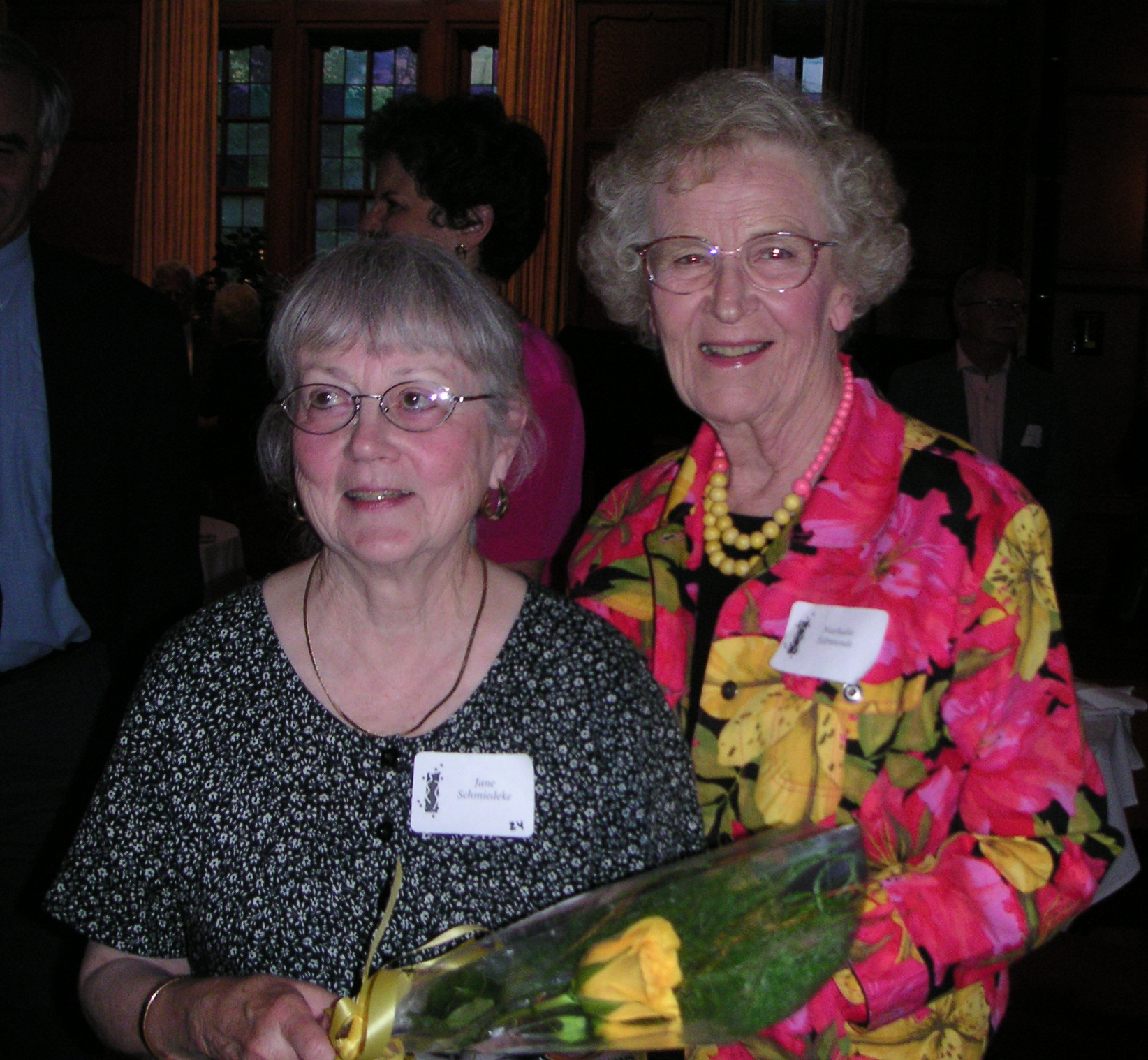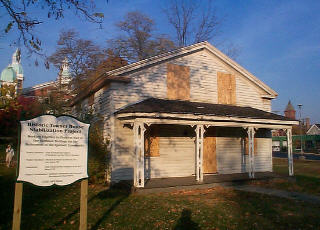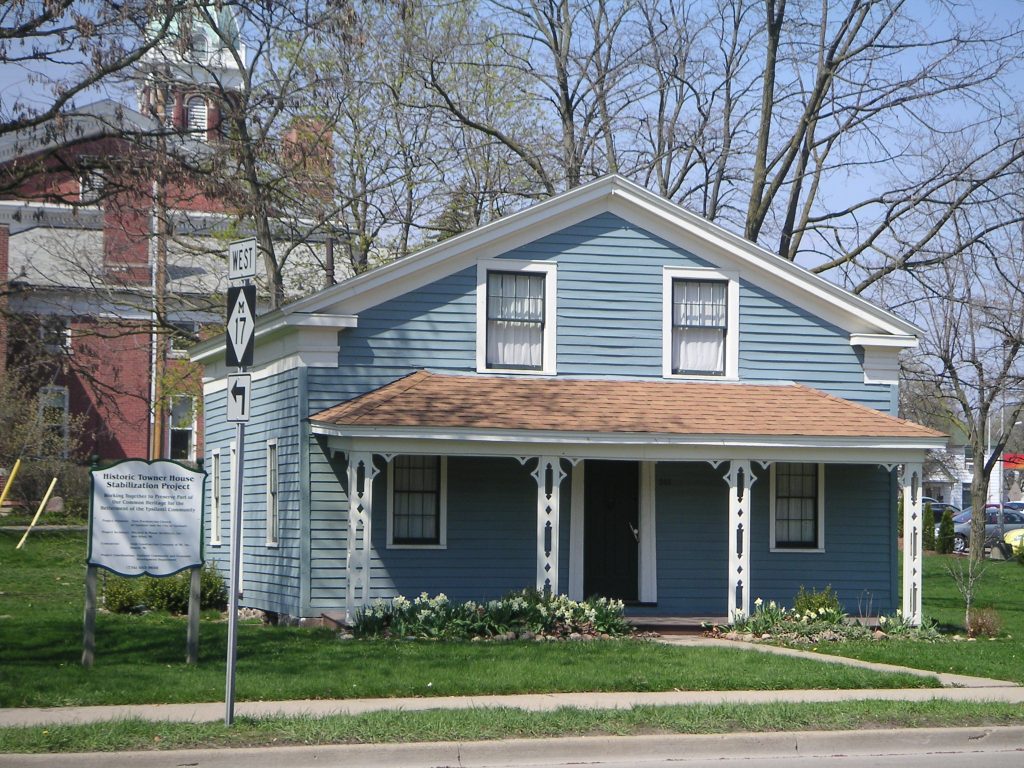Longtime YHF member Bill Nickels divides the city of Ypsilanti into three historical periods. The first stretched from the city’s founding in 1823 to 1939. Ypsilanti was then a quiet college town, its prosperity fueled by successful small industries. For a town its size, Ypsilanti had an unusual wealth of architecturally interesting buildings and houses representing almost every American architectural style: Greek Revival, Colonial Revival, Prairie Style, the bungalow, Queen Anne, Gothic Revival, and Italianate, among many others.
Bill refers to the years 1941 to 1973 as the Bomber Plant era. Factory workers poured into Ypsilanti during the war, dramatically altering the community. During these years, property owners milked their properties for all the profits they could squeeze out of them. These owners showed little concern for zoning or maintenance.
The era from 1973 to the present, according to Bill, has been the Jane Bird Schmiedeke and Nathalie Edmunds era. Together, these two women changed the city. In the 1960s, Depot Town was frequented by motorcycle gangs, specializing in violence and crime. All of Depot Town was on the market for $14,000. According to Jane, Ypsilanti had hit rock bottom.
By the early 1970s, the city was planning to remake itself. To increase its tax base, Ypsilanti drafted a master plan that included razing Depot Town and replacing its buildings with light industry. Riverside Park was going to become a parking lot. An Ann Arbor developer was planning to tear down the many buildings he owned on or near North Huron Street to build a civic center and a county building, and there was talk of a senior citizen high rise. By the mid-1970s, the county had begun planning a major highway through Depot Town. Nathalie Edmunds remembered what ensued as “one continual battle” to save North Huron Street and Depot Town. The late Jack Harris referred to the now-restored houses on North Huron as “living architectural history.”
The historic preservation movement in Ypsilanti really began around 1969, when the State of Michigan passed enabling legislation for the creation of historic districts. Shortly thereafter, city council member Nathalie Edmunds gathered a committee to study the feasibility of creating a historic district in Ypsilanti. After researching sixteen historic districts throughout the country, including Savannah, Annapolis, and New York City, Jane Bird Schmiedeke wrote the historic district ordinance that now protects Ypsilanti’s historic houses and buildings.
Schmiedeke recalls that whatever their size or location, all sixteen districts took the same approach, basing their local ordinances on the Supreme Court’s ruling that preservation is a legitimate public purpose and that governmental units are within their rights to regulate what can be done to historic buildings. Most important is that Jane wrote a damn good ordinance. She added restrictions; she put teeth in it. People fought those restrictions, but Jane prevailed. Ypsilanti’s historic district came into being by Ypsilanti city ordinance in 1978, and today it is on the National Register of Historic Places.
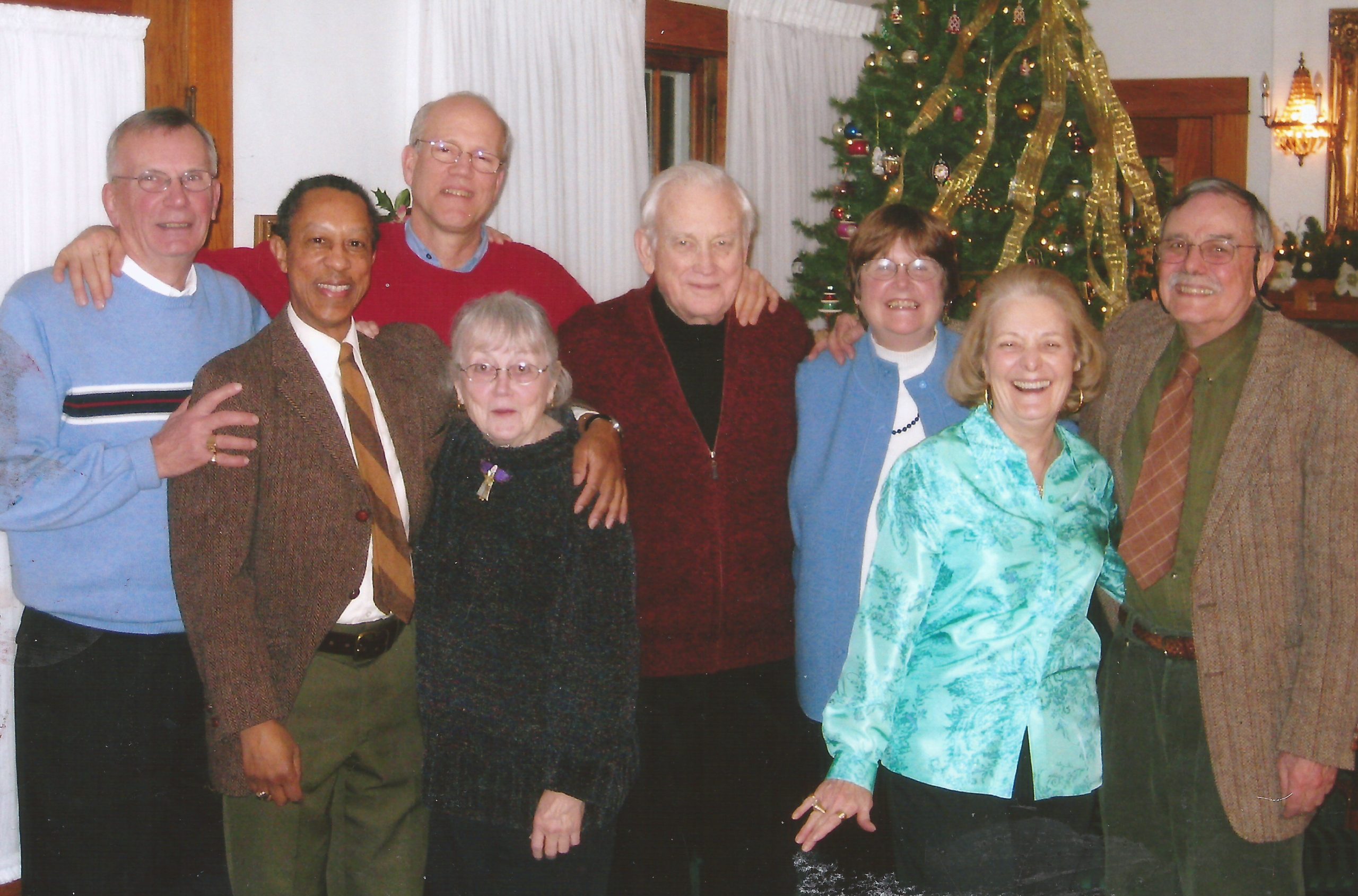
The 1837 Greek Revival Towner House at 303 North Huron Street is the oldest wooden structure on its original foundation in Ypsilanti. Learning that the Presbyterian Church, the owner of the Towner House, was considering demolishing it, Schmiedeke and Edmunds asked the church if they would allow an outside group to maintain it. When the church agreed, Jane and Nathalie decided to form such a group for the purpose of maintaining the Towner House. This group, as they conceived it, would also be dedicated to the preservation of historic properties in the city. The Towner House became Exhibit A of historic preservation in Ypsilanti.
A group of prominent Ypsilanti citizens, including Schmiedeke and Edmunds, formed the Ypsilanti Heritage Foundation in October 1974. Its mission was to encourage preservation of historic architecture throughout the city.
Excerpted from Ypsilanti Histories: A Look Back at the Last Fifty Years
Why care about Ypsilanti’s Towner House?
Read the c. 1996 letter Jack Harris sent to the Ypsilanti Historic District Commission below. (Courtesy of Clifford Larkins).
From: Arthur J. Harris
To: Ypsilanti Historic District Commission
Topic: Demolition of the Towner House
On a personal basis, I can say that the Towner House is the first building to attract my attention when I began to search for a home in Ypsilanti. I wrote to Reverend Woodruff of the Presbyterian Church, informing him of my interest. At the time, I believe some students were renting it from the church and it looked pretty bad; however, I saw its possibilities. My interest, unfortunately, met with rejection.
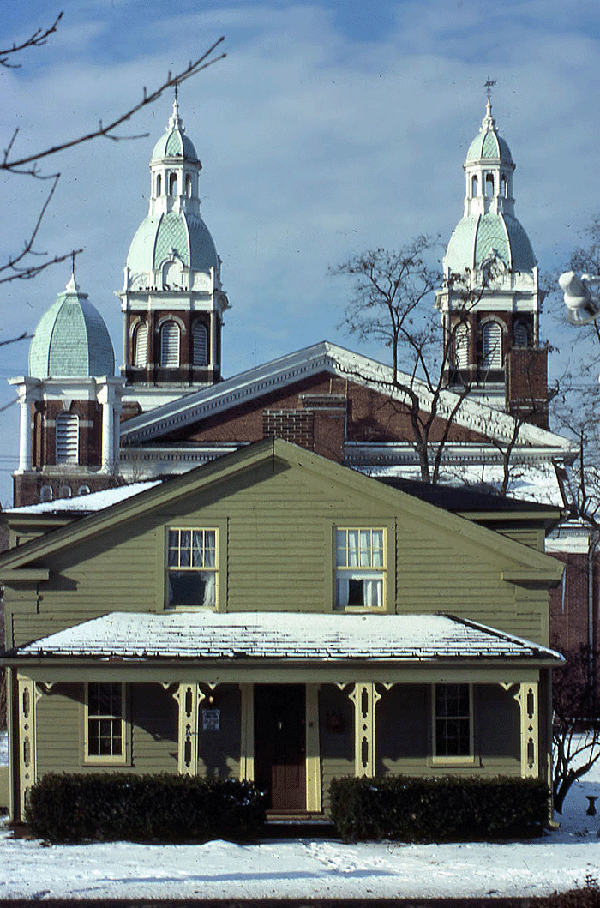
c. 1977 photo by Jack Harris
Courtesy of Clifford Larkins
When I did find a house in Ypsilanti, it was the spring of 1974 and a new group of concerned citizens had formed to save the Towner House. This new group, headed by Nathalie Edmunds and Jane Bird, became the Ypsilanti Heritage Foundation. They obtained an annual lease from the Presbyterian Church to rent the building. Work began immediately to renovate the house and I was enlisted to help. I vividly remember those first days of community service: washing windows, painting, and general cleaning up. Soon the house had a good tenant, Gary Decker, then at EMU, now at U-M, who, with much volunteer help from Foundation members, made the house look like Little Williamsburg. This relationship between the Foundation and the church continued until it was clear that the church would not commit themselves to more than an annual lease, making major investments in the building out of the question.
However, another group soon came forward, a group associated with the museum and the public schools-citizens interested in the Towner House on that historic street and, at the same time, interested in expanding the active program of local history studies already established in the schools. Hence, the Towner House was again leased to a community organization, this one known as Friends of the Towner House Children’s Museum, and thus began a period that is memorable to many of us as one of the most vital moments in our city’s proud history, when the Towner House was involved in an educational program that has been so important to the community-teaching children about American life as it was lived a hundred years ago. A lively schedule of activities took place on site at the Towner House, including a complete and very active program during Heritage Festival.
Hence, the Towner House is not just another old building in need of care. Its history is long: it has survived since almost the time that Michigan gained its statehood. It stands on the most historic street in town, at the climax of that street, directly across from the former City Hall (the Quirk Mansion) as well as the city’s superb House Museum (and, not so incidentally, diagonally across from the present mayor’s house).
The Ypsilanti Heritage Foundation was formed to save the Towner House from demolition. A lease agreement was created in 1975 between the church and the foundation. After continuing to be a private residence, it became a Children’s Museum in 1982. The museum ceased to exist in 1990, and the house fell into disrepair. (Eventually) a consent agreement was reached between the City and the Church, calling for removal of all the additions in the back to the original structure and installation of a new roof. The Towner House LLC was formed as a nonprofit entity to maintain and repair the building.
The Towner House was itself the home of another of Ypsilanti’s distinguished mayors, Mayor Tracy Towner. He and his family gave the house its now long-established name. Tracy’s sister, Carrie, was a member of the Conservatory of Music attached to the Normal School in the last century. She had studied in Europe and she gave private lessons at her studio in downtown Ypsilanti. During the house’s life as a children’s museum, a talented group of high school students presented an educational program entitled “Christmas at the Mayor’s House,” funded by EMU and The Michigan Council for the Humanities, in which the students played the roles of the Towner House family members. The house has thus not only lived history but has also been the site of a living history program. The world famous Ypsilanti Chamber Singers also performed for the guests.
No, this is not just another old house. It has a story to tell that gives meaning to all of our lives. It tells us who we are and where we came from. It has survived many years of neglect, but it has also seen through its windows the whole sweep of Ypsilanti’s history.
The street itself, our grandest, most historic avenue, has risen, fallen into severe decay, and risen again. Now the variety and splendor of its architectural heritage is appreciated far and wide. It stands almost completely restored as a proud symbol of our city’s determination to recover its heritage and move forward into the next century.
The Towner House is important to that street. No, it doesn’t have grandeur, but it has history wrapped around it. Even in its forlorn state at the moment, it remains a significant, tangible representation of our past. To approve demolition or moving at this point would be “perverse,” as Shakespeare defines the term: KNOWING WHAT’S RIGHT, AND DOING WHAT’S WRONG. That was Macbeth’s problem; let it not be ours.
The Towner House could easily be sold and become a viable asset to the community. The church need only relinquish a small piece of land, while gaining so much more; and the place itself could become what our mayor has made of her house across the street: a charming domestic site, a symbol of our respect for those who have gone before us, as well as a strong statement of our living community. I urge the commission to deny this new request to demolish the building.
Sincerely,
Arthur John Harris (Jack)
Updated on July 5, 2024 by Paul Schreiber (PaulSchreiber@comcast.net)
